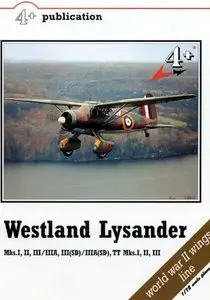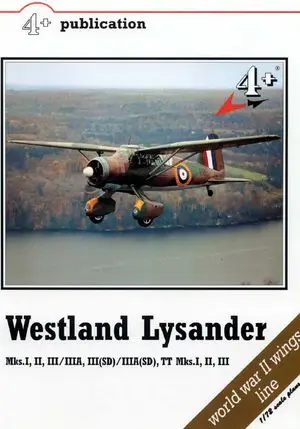Michal Ovcacik, Karel Susa - Westland Lysander Mks. I, II, II / IIIA, III(SD) / IIIA(SD), TT Mks. I, II, III
4+ Publications | 1999 | ISBN: 8090255914 | English | 40 pages | PDF | 9.47 MB
4+ Publications | 1999 | ISBN: 8090255914 | English | 40 pages | PDF | 9.47 MB
Army co-operation flying had a long tradition within the RAF in the inter-war period. It had its source in the WW! experience of the then Royal Flying Corps in support of ground forces. After the Armistice the newly-established Royal Air Force operated either specialised aircraft like the Bristol Fighter or adapted general purpose types, eg. the Fairey IIIF or later the Fairey Gordon. In the second half of the twenties, the Bristol aircraft was succeeded by a standard army co-operation type, the Armstrong Whitworth Atlas. Then followed a period in which the army co-operation units came once again to depend upon adaptation designs - the Hawker Audax/Hardy and Hector biplanes, which all were developed variants of the Hart bomber of the late 1920s. While the Hawker-designed, Westland-built Hector could be regarded only as an interim type, a new Specification A.39/34 was issued in April 1935, calling for a more modern aircraft to replace the Hawker Audax with a design exclusively conforming lo army co-operauon needs. Good slow-flying characteristics for visual observation of ground forces, short landing and take-off, provision for message pick-up, aerial reconnaissance, a radio and a small bomb load were required, all conveying the "conservative" RAF demands for such an aeroplane, but irrespective of recent advanced progress in military aviation. Four companies submitted their proposals to the Air Ministry tender. Bristol offered their Type 148 low-wing monoplane. Hawker came up with a biplane and A.V. Roe designed the Avro 670. As a result of Westlands lobbying at the Air Ministry, a Westland contender was also included in the competition, eventually winning the bid and beating the Bristol, the only other accepted firm, leaving it lo build only two prototypes.



